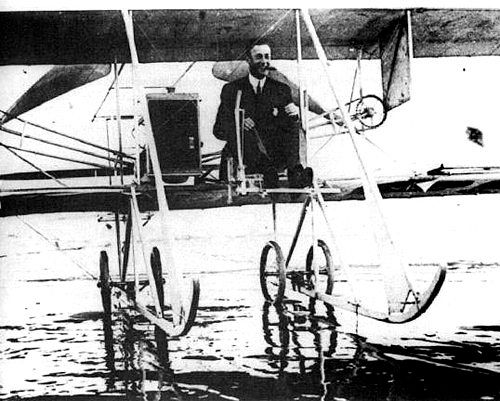100th Anniversary Of Historic Flight From Sheepshead Bay

This month marks the 100th anniversary that inexperienced daredevil pilot, Calbraith Perry (“Cal”) Rodgers — taking off from the Sheepshead Bay racetrack in his famous “Vin Fiz Flyer,” a Wright Brothers Model EX pusher biplane — accomplished the first transcontinental flight across the United States… in a mere 84 days.
The publisher William Randolph Hearst offered the Hearst prize, $US 50,000 to the first aviator to fly coast to coast, in either direction, in less than 30 days from start to finish. Rodgers persuaded J. Ogden Armour, of Armour and Company, to sponsor the flight, and in return he named the plane, a Wright Model EX designed for exhibition flights, after Armour’s grape soft drink Vin Fiz.
Back then, one had to be either crazy, suicidal, or both to attempt this flight, which began on September 17, 1911 — one century, minus a day, of the tragic P-51 Mustang crash at the National Championship Air Races and Air Show in Reno, which claimed 11 lives a couple of weeks back.
Rodgers, carrying the first transcontinental mail pouch with him on the trip, made 75 stops — including 16 crashes — and, according to the Wikipedia entry, “only a few pieces of the original plane actually made the entire trip.”
Sadly, only a few months later, Rodgers — just 33 at the time — was killed in a crash while exhibition flying in California. Calbraith’s widow, Mabel Rodgers, eventually donated the “Vin Fiz” to the Smithsonian Institution.




